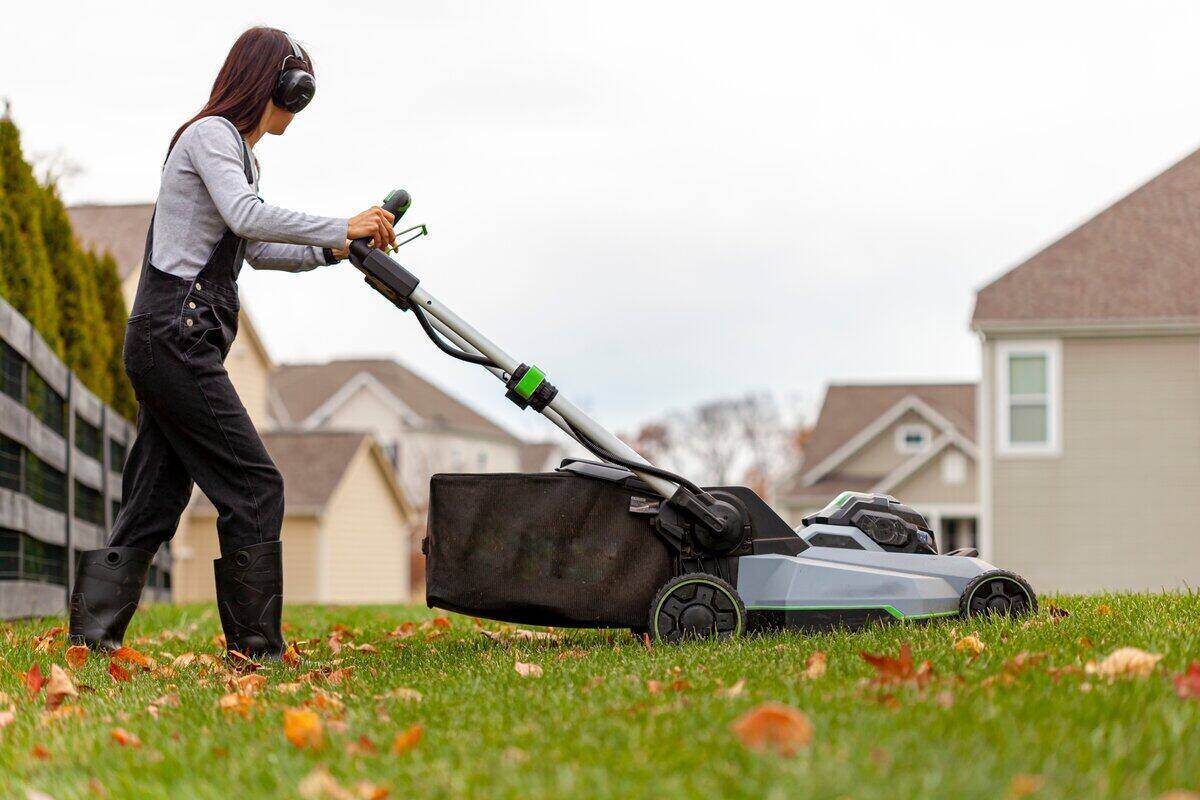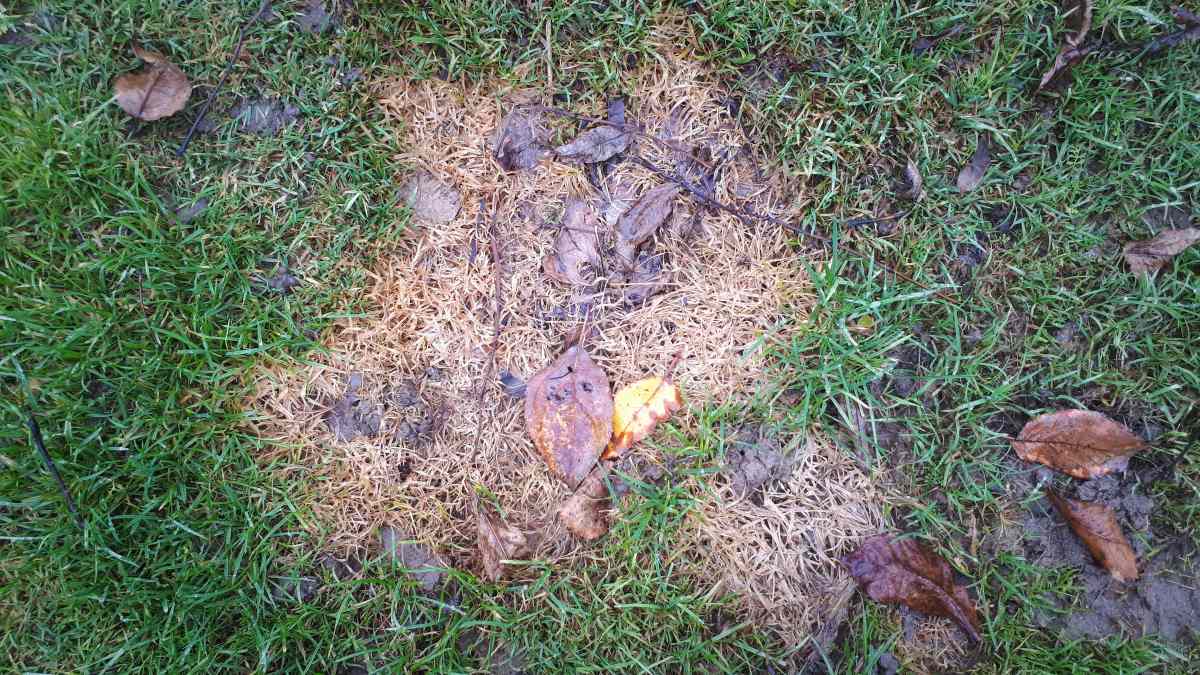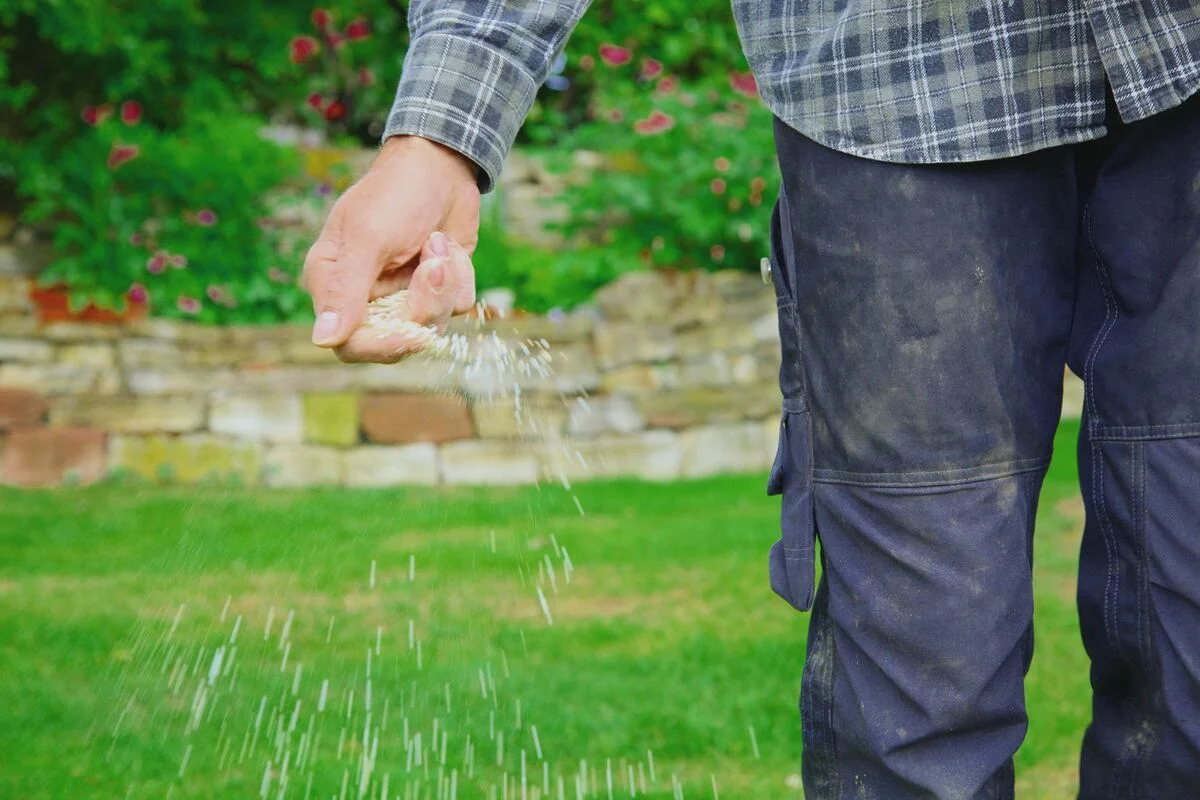
The cold winter months, with their frigid temperatures and snowy days, make it difficult to imagine mowing the lawn. But can you mow the lawn in winter? Or should you wait until spring? What if temperatures suddenly increase in winter, and you spot new growth peeking through?
Short answer: Don’t do it if you can help it. We recommend not mowing the lawn in winter, even if there’s a warm spell. It can wait until spring.
In this article, we’ll go into why you shouldn’t mow your lawn in winter and provide some tips on how to cause the least damage to your grass if you just can’t wait.
Is it Possible to Mow the Lawn in Winter?

In a nutshell, yes, it’s possible – but you must use caution and restraint if you don’t want to harm your lawn. Just because it can be done doesn’t mean it should be done.
A few basic precautions: Wet grass should never be mowed during winter (or any season), and you should never mow before a predicted frost. Also, it’s best to wait until your grass shows signs of new growth before you pull out the lawn mower – which usually doesn’t happen until spring, anyway.
While winter might not be ideal mowing weather, by understanding the rules before you mow, you can keep your lawn trim and neat during the cold months without hurting it too much.
Facts About Winter Lawn Care
As temperatures ascend in late winter and early spring, new grass starts to peek through. But before you jump on your lawn mower and start trimming, know that, while warm weather during winter can trigger new growth, mowing isn’t ideal during this time of year. Why? Two reasons:
1. Grass that is wet from snowmelt is more likely to be cut unevenly and can become susceptible to fungal lawn diseases.
2. Most grass goes dormant in cold weather, and mowing dormant grass can stress the resting plants, permanently damaging the lawn in the process.
So, while it might be tempting to mow in winter, refrain from doing so until spring shows its beautiful face again. Even if there’s an unusually warm spell in winter, don’t go anywhere near your lawn mower! A little bit of growth will help protect the grass’s roots from the cold that will inevitably return.
The best course is to resist the urge and wait for warmer, dryer weather to cut your grass.
But I Can’t Wait! – Tips for Winter Lawn Mowing
We understand. Watching your lawn become a wild and overgrown mess is enough to make any lawn care fanatic scream with frustration. If you can’t wait for the ground to thaw, here are some lawn mowing tips for winter to avoid damaging the lawn as much as possible:
1. Know When Your Grass is Dormant
Generally, if temperatures are below 50 degrees Fahrenheit and you aren’t seeing new growth, it’s safe to assume that the grass is in its dormant (sleeping) state and no mowing is needed. This usually occurs in October or November, but it could be as late as December, depending on where you call home.
While some milder winter climates allow grass to continue growing throughout winter, it’s still best to refrain from cutting the lawn when there’s any threat of frost.
2. Don’t Disturb Frosty Grass

Even the most delicate of steps can cause irreparable damage to a frosty lawn. That’s because when temperatures drop, grass freezes. The frozen water molecules inside the individual blades expand, leading them to become brittle and break instead of just bending.
That’s why it’s wise to avoid walking across your lawn – and especially mowing – when there’s frost on the ground or temperatures are below freezing.
3. Correct Cutting Height is Key
When it’s time to get your lawn prepped for the winter season, mow your grass down to 2 inches in height. This is considered the grass height “sweet spot” for winter. When you cut your grass to 2 inches, and it doesn’t grow anymore, that means it’s time to put the lawn mower away until spring.
But never cut off more than one-third of the grass blade at once! Cutting off too much of the blades at once makes it harder for your grass to conduct photosynthesis. This is especially important in winter when the sun is out less during the day and snow build-up can block sunlight from reaching your grass.
4. Never Mow Wet Grass
It’s a big no-no. Not just because it may be slippery, but wet grass is harder to cut cleanly. When mowing wet, your mower will tend to tear the grass blades and leave your lawn open to diseases. You may also end up with clumps of uncut grass all over the yard, which can act as a sun blocker.
And beyond the grass itself, wet grass and dirt can gunk up your mower blades and chassis, making them more susceptible to rust.
5. Never Mow Before a Frost
Cutting grass before temperatures plummet can spell disaster for your beloved patch of green. While the lawn might look healthy and strong at the moment, frost can damage freshly cut grass, and the lawn won’t be able to recover if it’s dormant.
What’s more, when the frost melts, that moisture plus freshly cut grass tips makes a perfect environment for pests and fungal lawn diseases to develop.
So, even if you feel like you have to mow the lawn in winter, don’t do so within 48 hours of an anticipated frost.
FAQ About Mowing In Winter
Spring and summer are the perfect times to leave grass clippings on the lawn. These clippings can help provide up to 25% of your lawn’s required nutrients as they decompose over time.
However, at the beginning and end of the growing season, when decomposition is slow, it’s important to remove the clippings from your lawn.
Dormant grass is grass that has stopped actively growing due to colder temperatures. Cool-season grasses typically enter dormancy during the late fall and winter months, usually when the daily temperature reaches around 50°F.
Warm-season grasses, however, enter a state of dormancy typically around mid to late October due to their low tolerance for cold weather.
Cool-season grasses tend to stay greener through the winter months, while warm-season grasses will go dormant and may turn yellow or brown.
For those looking for a pop of color throughout the winter, consider overseeding with fescue in the fall.
Many lawn care companies offer winter services during the mowing off-season, including things like snow removal, pressure washing, gutter cleaning, and even installing Christmas lights. If your home needs an outdoor service this winter, your local lawn care company might be able to provide it!
Winter Time, Winter Worries
Winter might be the most wonderful time of the year, but winter lawn care can cause more than a few headaches. Even if you’re lawn-obsessed and tempted to mow this season, don’t do it! Mowing the lawn in winter is more of a risk than it’s worth.
But rest assured, with the help of your local lawn care experts, you can maintain a beautiful, healthy lawn all year long – winter included.
So don’t waste another minute worrying about what to do with your lawn during chilly months. Just relax and wait for spring, when the real lawn care work will begin again.
Main Image Credit: Shutterstock




